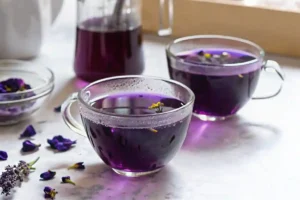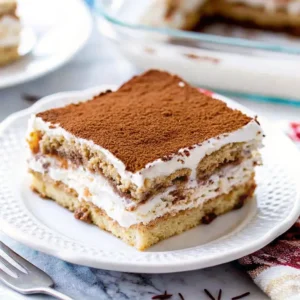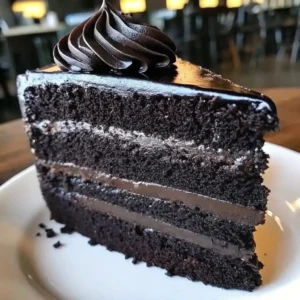Does brown sugar matter in cookies? Absolutely! Cookies are a cherished snack loved by everyone, and each ingredient plays a vital role in their success. Sugar is essential not just for sweetness but also for its impact on texture and flavor. Bakers often debate whether to use brown sugar, white sugar, or a combination of both in their recipes. This choice can significantly influence the cookies’ chewiness, moisture, and depth of flavor. In this post, we’ll explore how brown sugar affects cookies and why it’s a key ingredient to consider in your baking.
Table Of Contents
Table of Contents
What Is Brown Sugar?
Brown sugar is a form of sugar that has the molasses that is produced by refining sugar. This simple ingredient creates brown sugar’s distinctive characteristic features, like its supple texture, caramel-like flavor, and darker color.
Types of Brown Sugar
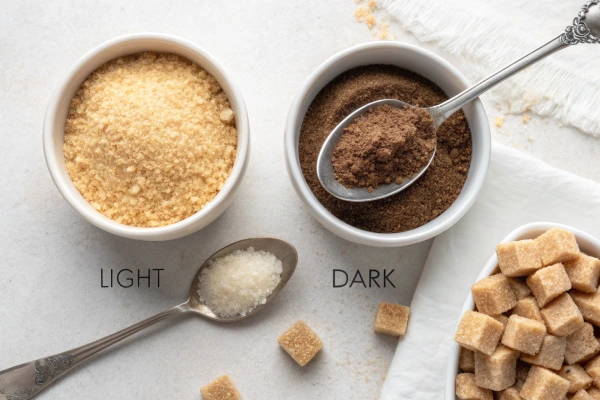
Brown sugar is available in two types:
- Medium Brown Sugar is made up of lesser amounts of molasses, which gives it a lighter flavor. It is the preferred choice for cookies with an underlying caramel taste is sought after.
- Dark Brown Sugar It is stuffed with more molasses and sugar, this sugar offers a smoky and slightly tangy taste that is perfect for rich or spiced recipe cookies.
Understanding the difference in these cookies of cookies is crucial when you decide which one will impact your cookies.
How Does Brown Sugar Impact Cookie Flavor?
One of the most notable characteristics that brown sugar has is the capacity to improve the flavor of cookies. It’s more than just adding sweetness to the dough. It creates complexity, which can raise the recipe from basic to unimaginable levels.
Brown Sugar and Caramelization
The molasses in brown sugar adds caramel flavors when heated. This produces a luscious and buttery flavor that gives the depth of cookies. For Chocolate Chip Cookies, caramelization enhances the chocolate flavor, creating an exquisite mix of flavors.
Brown Sugar’s Tangy Sweetness
In contrast to white sugar and brown sugar, brown sugar is characterized by some tangy taste from Molasses. This tanginess helps balance the overall sweetness of the cookies and makes them more delicious and less overpowering.
Enhancing Flavors using Brown Sugar
Brown sugar does not just add its taste to the mixture, it also enhances other ingredients. Examples:
- Spices such as cinnamon, nutmeg, and ginger can be more prominent when they are paired in a dish with brown sugar.
- Vanilla extract gains depth, adding a creamy undertone.
- The dried and nutty fruits are highlighted, which makes oatmeal raisin and pecan cookies shine.
If you’re still interested in making cookies that don’t contain the use of brown sugar, you can find other available recipes. For example, the Chocolate Chip Cookie recipe with no brown sugar illustrates how you can create delicious cookies with a few substitutions.
Does Brown Sugar Affect Cookie Texture?
Texture is among the primary features of a great cookie which is why brown sugar can play an important part in determining if your cookies will be chewy, soft, or crispy.
Moisture Retention
Brown sugar has a hygroscopic nature which means it draws and holds moisture. This is why the brown sugar cookies remain soft and moist even after baking for a few days. This is the secret ingredient to creating the perfect chewiness in cookies such as oatmeal and snickerdoodles. cookies.
Chewy in comparison to. Crisp
The sugar you choose affects whether your cookies are crispy or chewy:
- Chewy Cookie The higher proportion of brown sugar produces cookies with a soft, chewy texture. The moisture content of the molasses prevents the cookies from drying out.
- Crispy cookies White sugar in contrast makes for a lighter, smoother texture due to its lower moisture content.
Cookie Spread
Brown sugar can also influence the way cookies spread when baking. Cookies that are made with brown sugar are likely to be less spread, which results in denser and more dense treats. Brown sugar is the perfect choice for recipes that require the cookies to keep their shape, for example, thumbprint cookies, or sugar-decorated cookies.
Brown vs. White Sugar: Key Differences
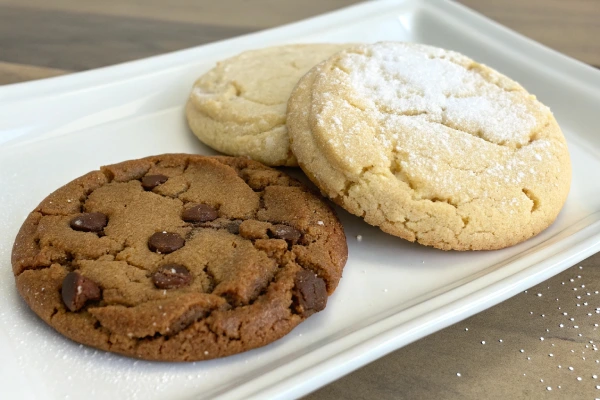
| Aspect | Brown Sugar | White Sugar |
|---|---|---|
| Flavor | Rich, caramel-like | Pure and sweet |
| Texture | Soft and chewy | Light, crisp |
| Moisture Retention | High | Low |
| Cookie Spread | Minimal | Wider |
These differences show the reasons why the kind of sugar you select is crucial. Although white sugar can be ideal for certain cookies brown sugar offers the most depth and versatility that shouldn’t be missed.
Substituting Brown Sugar in Cookie Recipes
What happens when you’re out of brown sugar, but would like its distinctive characteristics for your cookie? There are many alternatives to brown sugar.
DIY Brown Sugar
It is easy to prepare brown sugar yourself by using two basic ingredients:
- Combine 1 cup white sugar and one tablespoon of molasses to make light brown sugar.
- Make it 2 tablespoons of dark brown sugar.
This DIY version offers the same texture and flavor advantages as brown sugar that you buy from a store.
Alternative Sweeteners
Other sweeteners may replace brown sugar, however, they can affect the taste and texture
- Honey: Increases the moisture level but also adds a floral sweetness.
- Maple Syrup: Provides a subtle earthy flavor that helps make cookies more dense.
- Coconut sugar is a natural alternative that gives a caramel-like taste but without the Molasses.
Popular Cookie Recipes That Shine with Brown Sugar
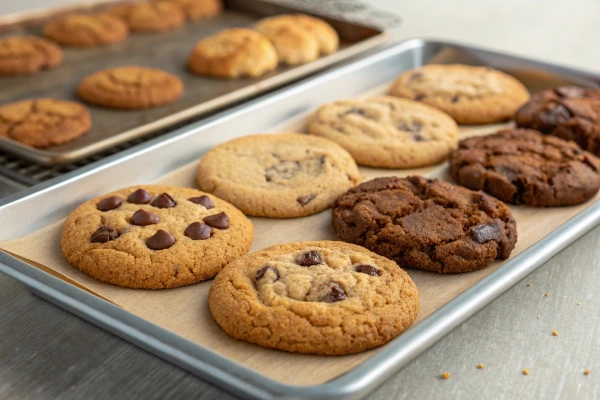
Brown sugar is an essential ingredient in many popular cookies. This is a review of how it can enhance these cookies:
Classic Chocolate Chip Cookies
The blend of chocolate and brown sugar makes for a harmonious blend of flavors. Brown sugar is the reason these cookies are soft and chewy and packed in caramel aromas.
Oatmeal Raisin Cookies
Brown sugar increases the nuttiness of oats and raisins’ sweetness making a rich and satiating cookie.
Gingerbread Cookies
The deep, rich taste that comes from the dark brown sugar combines with the warming spices, making these delicious cookies the perfect holiday treat.
Peanut Butter Cookies
Brown sugar increases the natural peanut butter nuttiness while making the cookies more soft and moist.
Molasses Cookies
Molasses is the primary ingredient in this recipe however, pairing brown sugar with it enhances the chewy texture, and amplifies the spiced flavor.
FAQs: Does Brown Sugar Matter in Cookies?
Can I only use Brown sugar?
If you use just brown sugar can make them chewier, softer, and more delicious. But, they will be less spreadable in baking.
What does the proportion of brown sugar to white sugar impact cookies?
A higher proportion of brown sugar produces soft, chewier cookies while white sugar makes more crisp cookies that have a light texture.
Do I need to substitute dark brown sugar with lighter brown sugar?
Absolutely! Dark brown sugar can give an intense flavor and darker shade to your cookies. However, the texture will stay the same.
Do I have to mix white and brown sugar in a recipe?
Yes, combining both sugars will give you the most desirable of both the softness of brown sugar as well as the crispness of white sugar.
How can I preserve cookies made of Brown sugar?
Keep them in a sealed enclosed airtight container, at room temperature to ensure their chewiness and moisture.
Conclusion
Brown sugar is more than just a sweetener—it’s a key ingredient that enhances the flavor, texture, and overall quality of cookies. Its ability to retain moisture, add caramel-like notes, and create soft, chewy treats makes it a favorite among bakers. Does brown sugar matter in cookies? Absolutely! Whether you’re following a classic recipe or experimenting with new ideas, understanding the role of brown sugar can help you bake the perfect cookie every time.
Looking for more tasty recipes and cooking inspiration? Connect with us on Facebook at Dashtasty and become part of our foodie family.

